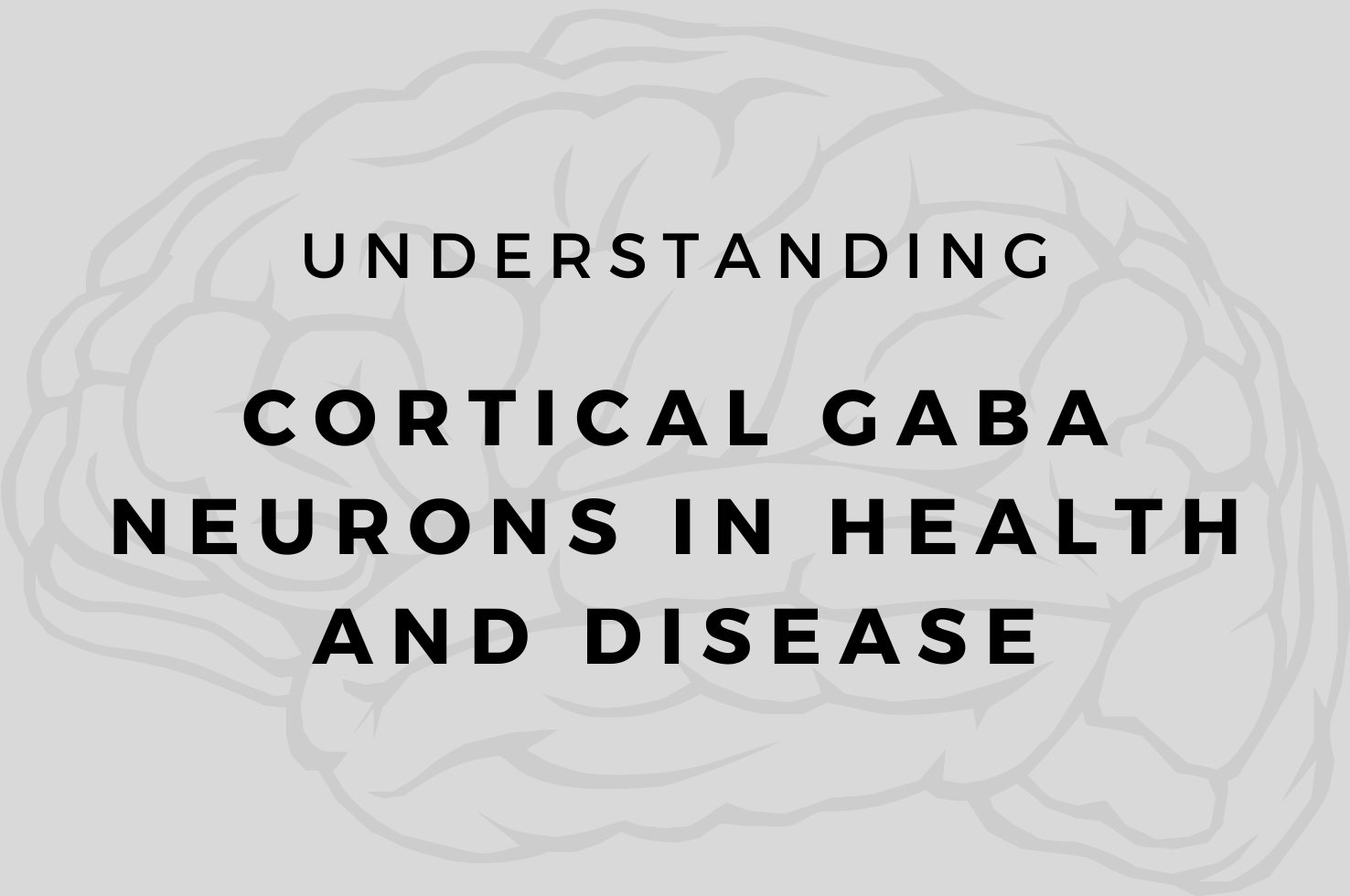New Research in Biological Psychiatry & Cerebral Cortex

Two recent studies from the Department of Psychiatry have enhanced our understanding of the role of cortical GABA neurons in health and disease. In Biological Psychiatry, Pitt Psychiatry investigators analyzed indices of parvalbumin-expressing basket cells axon terminals across regions of the visuospatial working memory network in schizophrenia. A paper published in Cerebral Cortex examines GABA neuron transcript expression in the primate prefrontal and visual cortices.
Biological Psychiatry: Altered parvalbumin basket cell terminals in the cortical visuospatial working memory network in schizophrenia
Visuospatial working memory is the ability to transiently maintain visuospatial information to guide behavior and involves information processing across primary visual (V1), association visual (V2), posterior parietal (PPC), and dorsolateral prefrontal (DLPFC) cortices. Commonly impaired in schizophrenia, performance on visuospatial working memory tasks requires information flow across these cortical regions.
In these regions, visuospatial working memory is associated with gamma frequency oscillations, which are thought to be generated by a local circuit formed by reciprocal connections between excitatory pyramidal neurons and parvalbumin-containing basket cells in layer 3. Inhibition from parvalbumin-containing basket cells serves to synchronize the firing of pyramidal neurons at gamma frequency. Thus, parvalbumin-containing basket cell alterations within V1, V2, PPC, and/or DLPFC could disrupt locally generated gamma oscillations, thereby impairing visuospatial working memory in schizophrenia.
The spiking of parvalbumin-containing basket cells inhibits layer 3 pyramidal neurons through the synaptic release of GABA from axon terminals where GABA is synthesized by the 65 and 67 kDa isoforms of glutamic acid decarboxylase (GAD65 and GAD67, respectively). Thus, knowledge of GAD65 and GAD67 protein levels alterations across the visuospatial working memory network could provide insight into the role parvalbumin-containing basket cell neurotransmission plays in visuospatial working memory impairments in schizophrenia.
In a study published in Biological Psychiatry, scientists including Kenneth Fish, PhD (Associate Professor of Psychiatry), Robert Sweet, MD (UPMC Endowed Professor in Psychiatric Neuroscience and Professor of Neurology and Clinical and Translational Science), and David Lewis, MD (Distinguished Professor of Psychiatry and Neuroscience, Thomas Detre Professor of Academic Psychiatry), used an innovative experimental approach to quantify the density of detectable parvalbumin-containing basket cells terminals and of the levels of parvalbumin, GAD67, and GAD65 protein levels per terminal in layer 3 from these four regions of the visuospatial working memory network, in brain specimens from 20 pairs of schizophrenia and unaffected comparison subjects.
Findings revealed that in comparison subjects, all measures, except for GAD65 levels, exhibited a caudal-to-rostral decline across the visuospatial working memory network. In schizophrenia, the density of detectable parvalbumin-containing basket cell terminals was significantly lower in all regions except DLPFC, whereas parvalbumin-containing basket cell terminal levels of parvalbumin, GAD67 and GAD65 proteins were lower in all regions. A composite measure of inhibitory strength was lower in schizophrenia subjects, although the magnitude of the diagnosis effect was greater in V1, V2 and PPC cortices than in DLPFC.
“The regional differences in the magnitude of the disease effect on parvalbumin-containing basket cell inhibitory strength suggest that in subjects with schizophrenia there are region-specific alterations in information processing during visuospatial working memory tasks,” said Dr. Fish, the study’s lead author.
Altered parvalbumin basket cell terminals in the cortical visuospatial working memory network in schizophrenia
Fish KN, Rocco BR, DeDionisio AM, Dienel SJ, Sweet RA, Lewis DA.
Biological Psychiatry, Available online 19 February 2021, ISSN 0006-3223, https://doi.org/10.1016/j.biopsych.2021.02.009
Cerebral Cortex: Distinct laminar and cellular patterns of GABA neuron transcript expression in monkey prefrontal and visual cortices
Cortical interneurons, which utilize the inhibitory neurotransmitter γ-aminobutyric acid (GABA), regulate cortical network activity. Different subtypes of GABA neurons have been identified in the primate neocortex based on uniquely expressed gene products. Prior research has suggested that levels of these gene products differ across cortical regions, with pronounced differences between the dorsolateral prefrontal cortex (DLPFC) and the primary visual cortex (V1). However, the basis for these differences had not been studied.
To determine the laminar and cellular bases for the marked differences in GABA-related transcript levels between monkey DLPFC and V1, scientists including Medical Science Training Program student Sam Dienel; Kenneth Fish, PhD (Associate Professor of Psychiatry); and David Lewis, MD (Distinguished Professor of Psychiatry and Neuroscience, Thomas Detre Professor of Academic Psychiatry), conducted two studies. The first study quantified levels of transcripts that distinguish among subtypes of GABA neurons, or that index pre- and post-synaptic GABA neurotransmission, in tissue homogenates restricted to layers 2 and 4 of macaque monkey DLPFC and V1. In the second study, they used multiplex fluorescent in situ hybridization to quantify relative neuronal densities and transcript levels per neuron in the same regions and layers.
In a recent article published in Cerebral Cortex, the scientists identified three distinct expression patterns of GABA-related transcripts across layers and regions in the first study. The majority of transcripts expressed in distinct GABA neuron populations, including SST, CB, CB1R, CCK, VIP, and CR mRNAs, had pattern one: higher expression in DLPFC and layer 2 relative to V1 and layer 4, respectively. In contrast, PV mRNA showed the opposite pattern two: higher expression in V1 and layer 4 relative to DLPFC and layer 2, respectively. Relative to markers of specific subtypes of GABA neurons, presynaptic markers of GABA neurotransmission showed only modest or no regional and laminar differences (pattern three). In the second study, the authors determined that these patterns were due to laminar and regional differences in the relative density of GABA neuron subclasses (SST) or in the level of gene expression per neuron (PV).
“These findings clearly reveal that the neural circuitry substrate for information processing differs substantially between primate V1 and DLPFC, and may provide insights into the different roles of SST and PV neurons in visual spatial working memory,” said Dr. Lewis, the study’s lead author.
Distinct laminar and cellular patterns of GABA neuron transcript expression in monkey prefrontal and visual cortices
Dienel SJ, Ciesielski AJ, Bazmi HJ, Profozich EA, Fish KN, Lewis DA.
Cerebral Cortex, Volume 31, Issue 5, May 2021, Pages 2345–2363, https://doi.org/10.1093/cercor/bhaa341
